The Queen's Research Opportunities Funds awarded 20 researchers from across disciplines a chance to begin innovative projects and forge new collaborations with colleagues and scholars around the world. Listed below are short descriptions of each researcher and their proposed projects.
Recipients: Karine Bertrand, Cathleen Crudden, Philip Jessop, Yongjun Lai, Neil Renwick.
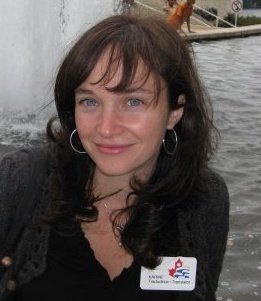 Karine Bertrand — Dr. Karine Bertrand is using the Research Leaders’ Fund to build an international network of Indigenous women filmmakers. The first step of her project will be devoted to the study of three distinct endeavours, where documentary film practices directly contribute to community development and healing, intercultural communication, and cultural pride for the empowerment of First Nations and Inuit women who have been targets for violence and discrimination. One of the main goals of this project is to build a digitally based network. Through this network, Indigenous women filmmakers and videographers from the Americas (North and South) can share their filmmaking strategies and see how these models are transferable and how they can impact their communities. Her project will favour the dissemination of research on Indigenous filmmaking practices inside and outside of Canada, through conferences, workshops, book chapters, and articles. Particularly, she will implement a research centre at Queen’s Department of Film and Media focusing on indigenous and minority women’s film and media productions. The outcome of this research will not only be of use to scholars in feminism, Indigenous studies, film and media, and women’s studies, but also for practitioners, curators, and activists engaged in the global networking of feminist Indigenous media art.
Karine Bertrand — Dr. Karine Bertrand is using the Research Leaders’ Fund to build an international network of Indigenous women filmmakers. The first step of her project will be devoted to the study of three distinct endeavours, where documentary film practices directly contribute to community development and healing, intercultural communication, and cultural pride for the empowerment of First Nations and Inuit women who have been targets for violence and discrimination. One of the main goals of this project is to build a digitally based network. Through this network, Indigenous women filmmakers and videographers from the Americas (North and South) can share their filmmaking strategies and see how these models are transferable and how they can impact their communities. Her project will favour the dissemination of research on Indigenous filmmaking practices inside and outside of Canada, through conferences, workshops, book chapters, and articles. Particularly, she will implement a research centre at Queen’s Department of Film and Media focusing on indigenous and minority women’s film and media productions. The outcome of this research will not only be of use to scholars in feminism, Indigenous studies, film and media, and women’s studies, but also for practitioners, curators, and activists engaged in the global networking of feminist Indigenous media art. Cathleen Crudden — Dr. Cathleen Crudden’s project “Carbon-based ligands for metal surfaces: A revolution in biosensing” intends to develop one of the most sensitive and inexpensive biosensors to date. Last year, the Crudden group demonstrated that specially designed organic molecules can be chemically bound to gold surfaces by a carbon–metal bond instead of a sulfur-metal bond. Her group demonstrated that this technique could be useful in the preparation of biosensors using surface plasmon resonance as the sensing element. In this work, she will look to develop increasingly sensitive detection of diseases that are time-sensitive and difficult to detect. Dr. Crudden’s project challenges 30 years of dogma surrounding "best practices" for the preparation of surface modified devices integrating organic components with metallic surfaces. The outcomes of the project will have significant impact on the basic science of these devices and their real-world applications in the field.
Cathleen Crudden — Dr. Cathleen Crudden’s project “Carbon-based ligands for metal surfaces: A revolution in biosensing” intends to develop one of the most sensitive and inexpensive biosensors to date. Last year, the Crudden group demonstrated that specially designed organic molecules can be chemically bound to gold surfaces by a carbon–metal bond instead of a sulfur-metal bond. Her group demonstrated that this technique could be useful in the preparation of biosensors using surface plasmon resonance as the sensing element. In this work, she will look to develop increasingly sensitive detection of diseases that are time-sensitive and difficult to detect. Dr. Crudden’s project challenges 30 years of dogma surrounding "best practices" for the preparation of surface modified devices integrating organic components with metallic surfaces. The outcomes of the project will have significant impact on the basic science of these devices and their real-world applications in the field. Philip Jessop — To date, transportation fuels and organic chemicals have been largely obtained by passing crude oil through a refinery. In collaboration with Dr. Pascale Champagne in Civil Engineering, The Jessop Group intends to use the Research Leaders’ Fund to improve methods for the conversion of cellulosic biomass into biofuels through the CMF intermediate in a manner that is economically and environmentally sustainable. This project will be conducted by two graduate students, who will be co-supervised by Jessop and Champagne, and advised by Dr. Mark Mascal from the University of California, Berkley. With Canada’s focus on developing new products from underutilized natural resources, the proposed research will be particularly beneficial in establishing leadership in the area of bio-sourced materials. This platform approach will not only be capacity building for our own research programs, but will also allow us to develop synergistic relationships with other researchers working on the production of CMF and its use as a building block molecule.
Philip Jessop — To date, transportation fuels and organic chemicals have been largely obtained by passing crude oil through a refinery. In collaboration with Dr. Pascale Champagne in Civil Engineering, The Jessop Group intends to use the Research Leaders’ Fund to improve methods for the conversion of cellulosic biomass into biofuels through the CMF intermediate in a manner that is economically and environmentally sustainable. This project will be conducted by two graduate students, who will be co-supervised by Jessop and Champagne, and advised by Dr. Mark Mascal from the University of California, Berkley. With Canada’s focus on developing new products from underutilized natural resources, the proposed research will be particularly beneficial in establishing leadership in the area of bio-sourced materials. This platform approach will not only be capacity building for our own research programs, but will also allow us to develop synergistic relationships with other researchers working on the production of CMF and its use as a building block molecule.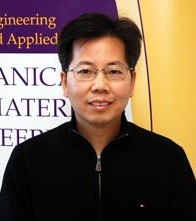 Yongjun Lai — Dr. Yongjun Lai is using the Research Leaders’ Fund to accelerate his project “Novel Wearable Technology for Better Vision", which aims to improve intraocular pressure (IOP) measurement technology. IOP is a critical factor used to monitor eye health. In particular, elevated IOP is a leading risk factor for glaucoma, a leading cause of blindness. This project aims to develop innovative, easy-to-use, reliable and cost-effective contact lens-based pressure sensors, which will measure IOP non-invasively by using mobile devices and applications and provide patients more frequent access to IOP measurement. As such, it will enable clinicians to prescribe more timely treatment for the patients. Success of the project will not only result in improved health for the many Canadians who will develop glaucoma in their lifetimes, but may also reduce the significant social and economic costs associated with vision care. Trainees involved in this project will be poised to make valuable contributions to the growth of micro-manufacturing technology in Canada, and to assume leadership roles in the advancement of vision health in Canada. In this and other important ways, Dr. Lai’s project will benefit Queen’s reputation as a leader in vision care and promote collaborations with other leading institutions.
Yongjun Lai — Dr. Yongjun Lai is using the Research Leaders’ Fund to accelerate his project “Novel Wearable Technology for Better Vision", which aims to improve intraocular pressure (IOP) measurement technology. IOP is a critical factor used to monitor eye health. In particular, elevated IOP is a leading risk factor for glaucoma, a leading cause of blindness. This project aims to develop innovative, easy-to-use, reliable and cost-effective contact lens-based pressure sensors, which will measure IOP non-invasively by using mobile devices and applications and provide patients more frequent access to IOP measurement. As such, it will enable clinicians to prescribe more timely treatment for the patients. Success of the project will not only result in improved health for the many Canadians who will develop glaucoma in their lifetimes, but may also reduce the significant social and economic costs associated with vision care. Trainees involved in this project will be poised to make valuable contributions to the growth of micro-manufacturing technology in Canada, and to assume leadership roles in the advancement of vision health in Canada. In this and other important ways, Dr. Lai’s project will benefit Queen’s reputation as a leader in vision care and promote collaborations with other leading institutions.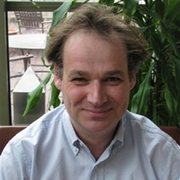 Neil Renwick — Due to misleading clinical presentation, Neuroendocrine Tumors (NETs) are frequently misdiagnosed and are often metastatic at the time of diagnosis. To address this issue, Dr. Renwick and his research team have successfully used their expertise in RNA-guided diagnostics to identify candidate RNA biomarkers for NET diagnosis and classification. Dr. Renwick plans to use the Research Leaders’ Fund to accelerate RNA-guided diagnostics for NETs through accurate RNA detection in patient samples and cell lines. Success of this project will identify novel circulating and single cell RNA biomarkers that inform NET clinical decision-making and provide insights into NET biology. This project is also expected to improve clinical care, providing patients with more objective measures of survival time, helping health care providers better manage limited resources, and guiding scientists and clinicians to devise and use more effective therapies.
Neil Renwick — Due to misleading clinical presentation, Neuroendocrine Tumors (NETs) are frequently misdiagnosed and are often metastatic at the time of diagnosis. To address this issue, Dr. Renwick and his research team have successfully used their expertise in RNA-guided diagnostics to identify candidate RNA biomarkers for NET diagnosis and classification. Dr. Renwick plans to use the Research Leaders’ Fund to accelerate RNA-guided diagnostics for NETs through accurate RNA detection in patient samples and cell lines. Success of this project will identify novel circulating and single cell RNA biomarkers that inform NET clinical decision-making and provide insights into NET biology. This project is also expected to improve clinical care, providing patients with more objective measures of survival time, helping health care providers better manage limited resources, and guiding scientists and clinicians to devise and use more effective therapies.Recipients: Heather Aldersey, Heidi Cramm, Michael Cunningham, Gabor Fichtinger, Parvin Mousavi, Robert Ross.
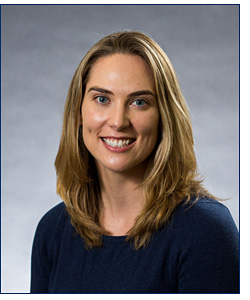 Heather Aldersey — Dr. Heather Aldersey’s project “Setting Priorities for Sex and Relationship Education for Women with Intellectual Disabilities (ID) in the Democratic Republic of the Congo (DRC) and their Families” aims to better equip women with intellectual disabilities (ID) and their families in the Democratic Republic of the Congo (DRC) with skills for developing safe, healthy relationship and strategies for identification, avoidance, and reporting of sexual and gender-based violence (SGBV). Women with intellectual disabilities (ID) in low-income and conflict contexts are typically omitted from sex and relationship education and support systems, in spite of the fact that they are the populations most vulnerable to abuse. Developing and delivering sex and relationship education and sexual and gender-based violence (SGBV) reduction interventions for persons with disabilities (PWDs) is a particularly urgent concern, with global studies indicating a three times higher prevalence of SGBV for PWD’s as compared to the general population. Dr. Aldersey’s project will benefit Queen’s by enabling collaboration between Queen’s faculty, Congolese stakeholders and international experts to set the priorities for future sex and relationship education in the DRC.
Heather Aldersey — Dr. Heather Aldersey’s project “Setting Priorities for Sex and Relationship Education for Women with Intellectual Disabilities (ID) in the Democratic Republic of the Congo (DRC) and their Families” aims to better equip women with intellectual disabilities (ID) and their families in the Democratic Republic of the Congo (DRC) with skills for developing safe, healthy relationship and strategies for identification, avoidance, and reporting of sexual and gender-based violence (SGBV). Women with intellectual disabilities (ID) in low-income and conflict contexts are typically omitted from sex and relationship education and support systems, in spite of the fact that they are the populations most vulnerable to abuse. Developing and delivering sex and relationship education and sexual and gender-based violence (SGBV) reduction interventions for persons with disabilities (PWDs) is a particularly urgent concern, with global studies indicating a three times higher prevalence of SGBV for PWD’s as compared to the general population. Dr. Aldersey’s project will benefit Queen’s by enabling collaboration between Queen’s faculty, Congolese stakeholders and international experts to set the priorities for future sex and relationship education in the DRC.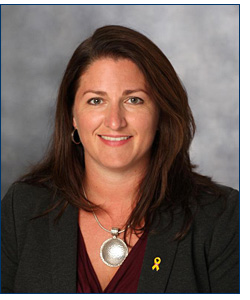 Heidi Cramm — Dr. Heidi Cramm is using the International Fund to finance her project “Military & Veteran Family Health Research: A Global Alliance.” The overarching purpose of this project is to develop an internationally agreed upon definition of the military and Veteran family. This project will build upon the first International Invitational Roundtable event, co-hosted by the Canadian Institute for Military & Veteran Health Research (CIMVHR) and King’s Centre for Military Health Research (KCMHR) in London, UK, in March 2017. Scholars from Canada, the USA, the UK, and Australasia, in partnership with the Vanier Institute for the Family, will contribute to the identification of gaps in the global understanding of the health needs of military and Veteran families. Among creating the means to move towards consistent data gathering, this project will produce and disseminate reports, along with peer-reviewed journal articles in the Journal of Military, Veteran, and Family Health (JMVFH) and foster international collaborations. The Alliance, a demonstration of strong international partnerships will ensure central involvement by Queen’s and Canada in international, cutting-edge initiatives to show that military and Veteran family health and wellbeing is of socioeconomic importance.
Heidi Cramm — Dr. Heidi Cramm is using the International Fund to finance her project “Military & Veteran Family Health Research: A Global Alliance.” The overarching purpose of this project is to develop an internationally agreed upon definition of the military and Veteran family. This project will build upon the first International Invitational Roundtable event, co-hosted by the Canadian Institute for Military & Veteran Health Research (CIMVHR) and King’s Centre for Military Health Research (KCMHR) in London, UK, in March 2017. Scholars from Canada, the USA, the UK, and Australasia, in partnership with the Vanier Institute for the Family, will contribute to the identification of gaps in the global understanding of the health needs of military and Veteran families. Among creating the means to move towards consistent data gathering, this project will produce and disseminate reports, along with peer-reviewed journal articles in the Journal of Military, Veteran, and Family Health (JMVFH) and foster international collaborations. The Alliance, a demonstration of strong international partnerships will ensure central involvement by Queen’s and Canada in international, cutting-edge initiatives to show that military and Veteran family health and wellbeing is of socioeconomic importance.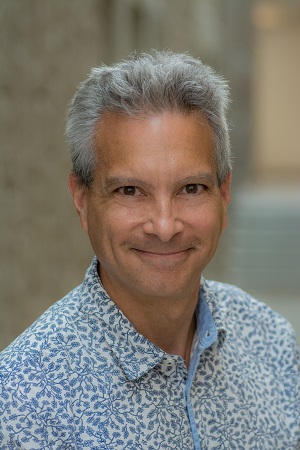 Michael Cunningham — Most polymers and plastics are derived from petroleum-based sources, contributing significantly to greenhouse gas emissions and climate change. Dr. Michael Cunningham plans to collaborate with Professors in Montpellier, France and Queen’s Professor Pascale Champagne to develop new approaches for the modification of two different natural polymers, cellulose nanocrystals (CNC) and chitosan that are currently of high research interest. The primary objective of this research is to develop new, more economical routes for making materials comprised mostly or entirely of renewable materials, with the specific goal of making the routes sufficiently economically attractive to enable widespread commercialization, and target the eventual replacement of materials derived from non-renewable resources. Success in this evolving research collaboration will not only achieve significant benefits to research efforts both at Queen’s and Montpellier, but encourage a broader and more significant societal and environmental impact. With Canada’s focus on developing new products from our plentiful and underutilized natural resources, the proposed research will be particularly beneficial in establishing leadership in the area of renewably-sourced materials.
Michael Cunningham — Most polymers and plastics are derived from petroleum-based sources, contributing significantly to greenhouse gas emissions and climate change. Dr. Michael Cunningham plans to collaborate with Professors in Montpellier, France and Queen’s Professor Pascale Champagne to develop new approaches for the modification of two different natural polymers, cellulose nanocrystals (CNC) and chitosan that are currently of high research interest. The primary objective of this research is to develop new, more economical routes for making materials comprised mostly or entirely of renewable materials, with the specific goal of making the routes sufficiently economically attractive to enable widespread commercialization, and target the eventual replacement of materials derived from non-renewable resources. Success in this evolving research collaboration will not only achieve significant benefits to research efforts both at Queen’s and Montpellier, but encourage a broader and more significant societal and environmental impact. With Canada’s focus on developing new products from our plentiful and underutilized natural resources, the proposed research will be particularly beneficial in establishing leadership in the area of renewably-sourced materials.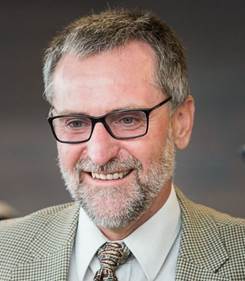 Gabor Fichtinger — Professor Gabor Fichtinger of the Queen’s School of Computing and his colleagues at Dartmouth College are using the International Fund to investigate the integration of Dartmouth’s electrical impedance imaging technology, distinguishing cancer from normal tissue during surgery, with Queen’s NaviKnife, a real-time, electromagnetic breast cancer surgery navigation system. This project brings together three Matariki Network partners: Queen's and the University of Western Australia have been recently funded by the CIHR Collaborative Health Research Projects to develop NaviKnife; Dartmouth is joining us as a third partner, adding their unique dimension to the research. Matariki Network members support the development of interdisciplinary, innovative research that demonstrates significant economic and societal global impact. Currently, in Canada, an average one out of three breast conserving surgery patients requires additional surgery: an appallingly high failure rate that necessitates immediate attention and definitive improvement. Breast conserving surgery is a form of soft tissue cancer surgery. Soft tissue surgeries are one of the most frequent types of general surgery procedures, providing the opportunity for complementary benefits to Canadians. During these surgeries, incessant tissue deformation and motion and a target that is not visible give rise to an extremely challenging procedure. Fichtinger’s proposal, a new cancer surgery guidance system that can significantly reduce surgical failure rates, will unify internationally-renowned expertise and cutting-edge technology from both Queen’s and Dartmouth, strengthening Canada’s reputation as a leader in cancer research.
Gabor Fichtinger — Professor Gabor Fichtinger of the Queen’s School of Computing and his colleagues at Dartmouth College are using the International Fund to investigate the integration of Dartmouth’s electrical impedance imaging technology, distinguishing cancer from normal tissue during surgery, with Queen’s NaviKnife, a real-time, electromagnetic breast cancer surgery navigation system. This project brings together three Matariki Network partners: Queen's and the University of Western Australia have been recently funded by the CIHR Collaborative Health Research Projects to develop NaviKnife; Dartmouth is joining us as a third partner, adding their unique dimension to the research. Matariki Network members support the development of interdisciplinary, innovative research that demonstrates significant economic and societal global impact. Currently, in Canada, an average one out of three breast conserving surgery patients requires additional surgery: an appallingly high failure rate that necessitates immediate attention and definitive improvement. Breast conserving surgery is a form of soft tissue cancer surgery. Soft tissue surgeries are one of the most frequent types of general surgery procedures, providing the opportunity for complementary benefits to Canadians. During these surgeries, incessant tissue deformation and motion and a target that is not visible give rise to an extremely challenging procedure. Fichtinger’s proposal, a new cancer surgery guidance system that can significantly reduce surgical failure rates, will unify internationally-renowned expertise and cutting-edge technology from both Queen’s and Dartmouth, strengthening Canada’s reputation as a leader in cancer research..jpg) Parvin Mousavi — The focus of Dr. Parvin Mousavi’s project is multi-parametric imaging for augmenting the diagnosis and management of prostate cancer, in the Advanced Multimodal Image-guided Operating (AMIGO) suite at the Brigham and Women’s Hospital (BWH), Harvard Medical School. This suite is an internationally recognized, unique clinical translational test-bed for image-guided diagnosis and therapy. According to the American and Canadian Cancer Societies, 262,000 new cases of prostate cancer are diagnosed annually and these numbers are expected to double by 2025 when the baby boomer generation reaches the age of peak prevalence. Dr. Mousavi’s research will contribute to better diagnoses and risk stratification of PCa helping decrease its mortality and morbidity. By improving early detection of aggressive prostate cancer and augmenting the current standard-of-care with affordable, widely available and minimally-invasive techniques, this project will improve the lives of thousands of Canadian men and conserve valuable health care funds. This rare international collaboration opportunity will bring together world leading clinicians at BWH and an established team of researchers in ultrasound imaging and machine learning at Queen’s university.
Parvin Mousavi — The focus of Dr. Parvin Mousavi’s project is multi-parametric imaging for augmenting the diagnosis and management of prostate cancer, in the Advanced Multimodal Image-guided Operating (AMIGO) suite at the Brigham and Women’s Hospital (BWH), Harvard Medical School. This suite is an internationally recognized, unique clinical translational test-bed for image-guided diagnosis and therapy. According to the American and Canadian Cancer Societies, 262,000 new cases of prostate cancer are diagnosed annually and these numbers are expected to double by 2025 when the baby boomer generation reaches the age of peak prevalence. Dr. Mousavi’s research will contribute to better diagnoses and risk stratification of PCa helping decrease its mortality and morbidity. By improving early detection of aggressive prostate cancer and augmenting the current standard-of-care with affordable, widely available and minimally-invasive techniques, this project will improve the lives of thousands of Canadian men and conserve valuable health care funds. This rare international collaboration opportunity will bring together world leading clinicians at BWH and an established team of researchers in ultrasound imaging and machine learning at Queen’s university..jpg) Robert Ross — Dr. Robert Ross is using the International Fund to finance his project “Exercise and Metabolomics — A novel approach to understanding the mechanisms by which exercise improves cardiometabolic health.” His research program describes a collaboration between our research group at Queen’s (Ross) and the research group of Dr. Robert Gerszten at Harvard Medical School in Boston. Specifically, Dr. Robert Ross will investigate whether exercise induced changes in metabolite concentration can explain the individual response to exercise for a given risk factor. While we know that most individuals who participate in national guideline-recommended activity (150 minutes of moderate-to-vigorous aerobic physical activity/week) will improve in one or more cardiometabolic risk factors, there exists substantial interindividual variation in response, wherein a significant proportion of individuals do not respond favourably to exercise. These observations have important clinical significance and can offer insight into why and how individuals respond or do not respond to exercise, and ultimately, influence prevention and treatment strategies for health care providers. Success of this research project will strengthen future grant applications for both research groups as well as provide a unique opportunity for Queen’s to work with an internationally recognized scholar, and consequently, open opportunities for Queen’s trainees and research teams to explore the mechanistic underpinnings of findings that otherwise would not be possible.
Robert Ross — Dr. Robert Ross is using the International Fund to finance his project “Exercise and Metabolomics — A novel approach to understanding the mechanisms by which exercise improves cardiometabolic health.” His research program describes a collaboration between our research group at Queen’s (Ross) and the research group of Dr. Robert Gerszten at Harvard Medical School in Boston. Specifically, Dr. Robert Ross will investigate whether exercise induced changes in metabolite concentration can explain the individual response to exercise for a given risk factor. While we know that most individuals who participate in national guideline-recommended activity (150 minutes of moderate-to-vigorous aerobic physical activity/week) will improve in one or more cardiometabolic risk factors, there exists substantial interindividual variation in response, wherein a significant proportion of individuals do not respond favourably to exercise. These observations have important clinical significance and can offer insight into why and how individuals respond or do not respond to exercise, and ultimately, influence prevention and treatment strategies for health care providers. Success of this research project will strengthen future grant applications for both research groups as well as provide a unique opportunity for Queen’s to work with an internationally recognized scholar, and consequently, open opportunities for Queen’s trainees and research teams to explore the mechanistic underpinnings of findings that otherwise would not be possible.Recipients: Rebecca Anweiler, Kim Renders, Matt Rogalsky, Greg Wanless.
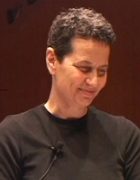 Rebecca Anweiler — With the persistence of maverick scientists like Dean Radin and Rupert Sheldrake, who are challenging mainstream scientific assumptions with verifiable research, the study of phenomena once considered paranormal is opening up, and proof of psychic and/or spiritual phenomena is no longer the question being asked by a growing number of scientists. In line with a growing artistic and philosophical movement that is revisioning the concept of animism, Fine Art Undergraduate Chair, Rebecca Anweiler’s project is part of an anti-colonialist and eco-centric effort to challenge the dismissal of the idea of animals, among other natural formations and entities, as having consciousness. To continue her exploration along these themes, she intends to use the Arts Fund for Artistic Production towards the development of an installation, Animal/Séance, which will be exhibited at Modern Fuel Artist Run Centre in Kingston this summer. For the experiment component of the installation, submissions from community members about their animal companions were collected and will be used to in a software program to teach and test a simple telepathic communication technique. The purpose of this experiment is not to prove or disprove the existence of telepathy but to encourage a more open and engaged approach to the very question of its existence.
Rebecca Anweiler — With the persistence of maverick scientists like Dean Radin and Rupert Sheldrake, who are challenging mainstream scientific assumptions with verifiable research, the study of phenomena once considered paranormal is opening up, and proof of psychic and/or spiritual phenomena is no longer the question being asked by a growing number of scientists. In line with a growing artistic and philosophical movement that is revisioning the concept of animism, Fine Art Undergraduate Chair, Rebecca Anweiler’s project is part of an anti-colonialist and eco-centric effort to challenge the dismissal of the idea of animals, among other natural formations and entities, as having consciousness. To continue her exploration along these themes, she intends to use the Arts Fund for Artistic Production towards the development of an installation, Animal/Séance, which will be exhibited at Modern Fuel Artist Run Centre in Kingston this summer. For the experiment component of the installation, submissions from community members about their animal companions were collected and will be used to in a software program to teach and test a simple telepathic communication technique. The purpose of this experiment is not to prove or disprove the existence of telepathy but to encourage a more open and engaged approach to the very question of its existence.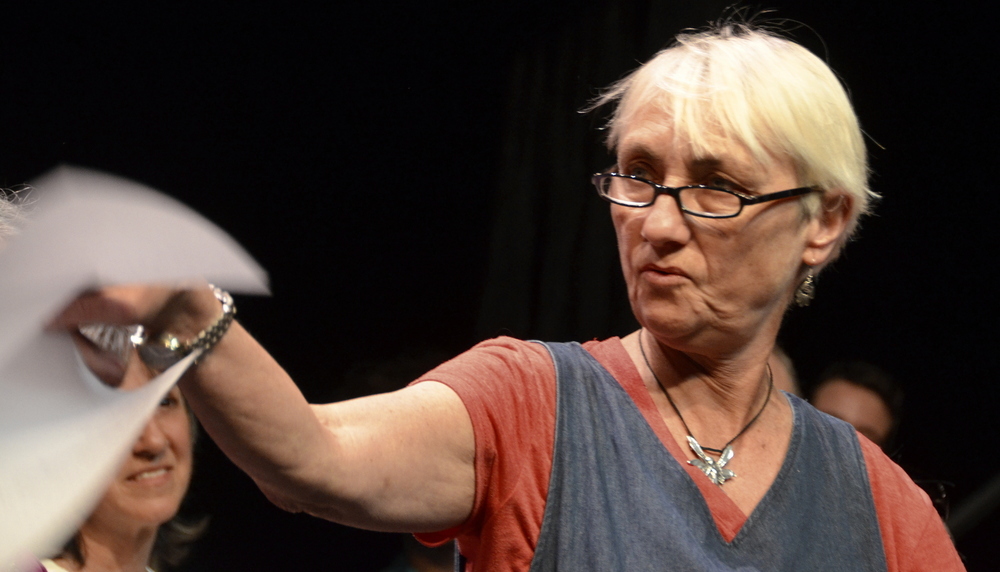 Kim Renders — In 1959, Romanian playwright, Eugene Ionesco wrote Rhinoceros as a response to the rise of fascism that preceded WWII. His play spoke to the challenge of maintaining one’s identity and integrity in a world that had succumbed to brute force and mindless submission. As the Artistic Director of Chipped Off Performance Collective, Kim Renders uses Ionesco’s texts as the inspiration for her own theatrical response to the present-day politics of divisiveness and fear. Her production of Rhinoceros or What’s Different About Me? uses art to address and offer resistance to the current trend toward conformity, racism, fear and small-mindedness. Several dozens of community members have already submitted their personal takes on the suggested theme of “Resistance;” including original poetry, personal monologue, dance, music and video art. Kim will rehearse with participants, one on one, and as an ensemble, to help them hone their contributions in preparation for the final performance. As well, a chosen group of actors will perform excerpts from Ionesco’s original text. This performance invites the audience to consider their own acts of resistance; to embrace the unfamiliar, and to understand that it is our uniqueness and differences that, collectively, define us as a community.
Kim Renders — In 1959, Romanian playwright, Eugene Ionesco wrote Rhinoceros as a response to the rise of fascism that preceded WWII. His play spoke to the challenge of maintaining one’s identity and integrity in a world that had succumbed to brute force and mindless submission. As the Artistic Director of Chipped Off Performance Collective, Kim Renders uses Ionesco’s texts as the inspiration for her own theatrical response to the present-day politics of divisiveness and fear. Her production of Rhinoceros or What’s Different About Me? uses art to address and offer resistance to the current trend toward conformity, racism, fear and small-mindedness. Several dozens of community members have already submitted their personal takes on the suggested theme of “Resistance;” including original poetry, personal monologue, dance, music and video art. Kim will rehearse with participants, one on one, and as an ensemble, to help them hone their contributions in preparation for the final performance. As well, a chosen group of actors will perform excerpts from Ionesco’s original text. This performance invites the audience to consider their own acts of resistance; to embrace the unfamiliar, and to understand that it is our uniqueness and differences that, collectively, define us as a community.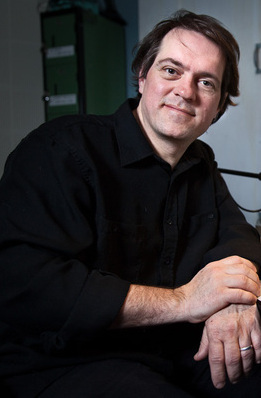 Matt Rogalsky — Dr. Matt Rogalsky intends to use the Arts Fund of Artistic Production to purchase a set of highly directional loudspeakers for use in sound installations. The first use to which these will be put is supporting a new collaboration between the Kahswentha Indigenous Knowledge Initiative and Kingston’s Native Language Nest community group. In April-May 2017, an initial series of loudspeaker installations, "From Here and Beyond: Stories of Katarokwi/Kingston”, was put in place at The Agnes, Ban Righ, Theological Hall, CFRC Radio, and Four Directions, featuring stories and songs in Anishinaabemowin and Kanyen’ke:ha. This is to be followed by a project using the newly acquired directional loudspeakers in an outdoor installation at the Skeleton Park Arts Festival in June 2017. The specialized speakers allow projection of “beams” of sound which are unheard until a listener interrupts them. In addition, the focused sound beams can be reflected off walls, trees and other objects, creating unusual aural illusions. Using the set of six speakers purchased through the Arts Fund, a network of intersecting beams of sound will be created.
Matt Rogalsky — Dr. Matt Rogalsky intends to use the Arts Fund of Artistic Production to purchase a set of highly directional loudspeakers for use in sound installations. The first use to which these will be put is supporting a new collaboration between the Kahswentha Indigenous Knowledge Initiative and Kingston’s Native Language Nest community group. In April-May 2017, an initial series of loudspeaker installations, "From Here and Beyond: Stories of Katarokwi/Kingston”, was put in place at The Agnes, Ban Righ, Theological Hall, CFRC Radio, and Four Directions, featuring stories and songs in Anishinaabemowin and Kanyen’ke:ha. This is to be followed by a project using the newly acquired directional loudspeakers in an outdoor installation at the Skeleton Park Arts Festival in June 2017. The specialized speakers allow projection of “beams” of sound which are unheard until a listener interrupts them. In addition, the focused sound beams can be reflected off walls, trees and other objects, creating unusual aural illusions. Using the set of six speakers purchased through the Arts Fund, a network of intersecting beams of sound will be created. Greg Wanless — Professor Greg Wanless is using the Arts Fund of Artistic Production to finance The Eliza Show’s text revision workshop, rehearsal, and performances. The Eliza Show will provide Professor Wanless, a professor in the Dan School of Drama and Music, an opportunity to collaborate as both a dramaturg and a director with two outstanding recent graduates of their program, Mariah Horner and Devon Jackson (Arts and Science ’15). As Canada acknowledges its 150th anniversary, they expect to celebrate Canada’s accomplishments by focusing on one of our lesser known stories, that of Eliza Grimason and her relationship with one of the fathers of confederation, Sir John A. Macdonald. Their story principally took place in and about Kingston and especially at the Grimason House, now Kingston’s famous Royal Tavern, a ‘watering hole’ that is still well-frequented by Kingston residents and Queen’s students. As Eliza tells tales and relates her anecdotes about Sir John and the plans he shared with her to further his political aspirations, their intentions are to recreate faithfully, in a site-specific environment, an experience that will help their audience members understand this important but lessor known folklore of our country.
Greg Wanless — Professor Greg Wanless is using the Arts Fund of Artistic Production to finance The Eliza Show’s text revision workshop, rehearsal, and performances. The Eliza Show will provide Professor Wanless, a professor in the Dan School of Drama and Music, an opportunity to collaborate as both a dramaturg and a director with two outstanding recent graduates of their program, Mariah Horner and Devon Jackson (Arts and Science ’15). As Canada acknowledges its 150th anniversary, they expect to celebrate Canada’s accomplishments by focusing on one of our lesser known stories, that of Eliza Grimason and her relationship with one of the fathers of confederation, Sir John A. Macdonald. Their story principally took place in and about Kingston and especially at the Grimason House, now Kingston’s famous Royal Tavern, a ‘watering hole’ that is still well-frequented by Kingston residents and Queen’s students. As Eliza tells tales and relates her anecdotes about Sir John and the plans he shared with her to further his political aspirations, their intentions are to recreate faithfully, in a site-specific environment, an experience that will help their audience members understand this important but lessor known folklore of our country.Recipients: Gary Kibbins, Sam McKegney.
.jpg) Gary Kibbins — The Department of Film and Media and the Agnes Etherington Art Centre bring intensive Queen’s and public engagement to the inaugural Stonecroft Foundation residency by acclaimed Quebec-based collaborative duo, Richard Ibghy and Marilou Lemmens. Ibghy and Lemmens are among Canada's most sought-after contemporary artists on the international stage, especially after their recent key work in the Istanbul Biennial. With the arrival of Canada's sesquicentennial marking of Confederation, the residency is an opportune moment for Ibghy and Lemmens to critically respond to the cultural, historical, and social landscapes of Queen's University and the City of Kingston through a Canadian Chapter of their research intensive project, The Golden USB. At the heart of the project the project is the possibility of imagining non-anthropocentric values to respond to the pressing issues facing our planet, including increasing pollution, anthropogenic climate change, ecosystem cascade events, the collapse of much of the earth's biodiversity, and the depletion of fresh water, soil and minerals. This partnership is committed to bringing a diverse range of artists to Queen's to create original work that broadens the scope of its visual culture and involves the University and community in important conversations. The Golden USB will open on 26 August at the Agnes, instituting a rich access point to the artists for class visits and cross-disciplinary dialogue.
Gary Kibbins — The Department of Film and Media and the Agnes Etherington Art Centre bring intensive Queen’s and public engagement to the inaugural Stonecroft Foundation residency by acclaimed Quebec-based collaborative duo, Richard Ibghy and Marilou Lemmens. Ibghy and Lemmens are among Canada's most sought-after contemporary artists on the international stage, especially after their recent key work in the Istanbul Biennial. With the arrival of Canada's sesquicentennial marking of Confederation, the residency is an opportune moment for Ibghy and Lemmens to critically respond to the cultural, historical, and social landscapes of Queen's University and the City of Kingston through a Canadian Chapter of their research intensive project, The Golden USB. At the heart of the project the project is the possibility of imagining non-anthropocentric values to respond to the pressing issues facing our planet, including increasing pollution, anthropogenic climate change, ecosystem cascade events, the collapse of much of the earth's biodiversity, and the depletion of fresh water, soil and minerals. This partnership is committed to bringing a diverse range of artists to Queen's to create original work that broadens the scope of its visual culture and involves the University and community in important conversations. The Golden USB will open on 26 August at the Agnes, instituting a rich access point to the artists for class visits and cross-disciplinary dialogue.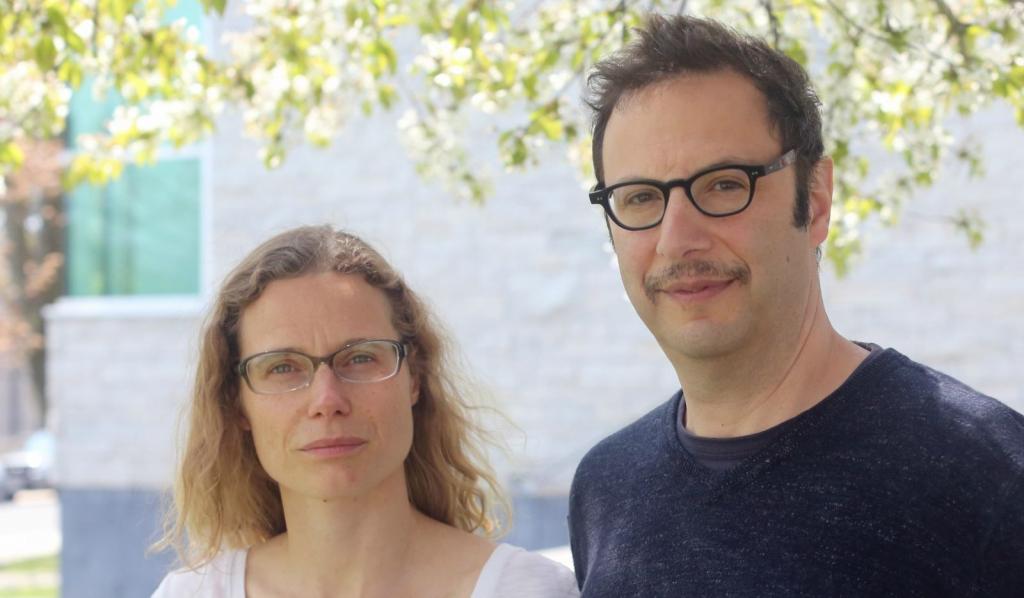
Artists: Marilou Lemmens & Richard Ibghy
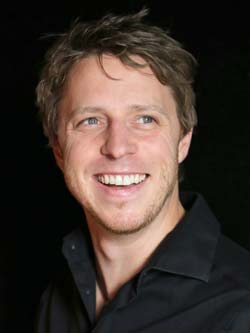 Sam McKegney — Queen’s Department of English will host Karen Solie as the tenth Writer-in-Residence for the Fall Term of 2017. Karen Solie is currently the Associate Director at the Banff Centre Writing Studio. She has held positions as MFA instructor at the University of British Columbia; mentor for the MFA creative writing programs at the University of Guelph and the University of Toronto; and Writer-in-Residence at St. Andrews University, and St. Andrews, Scotland. Karen Solie will conduct intensive one-on-one sessions with students throughout the term, drawing on her mentorship experience to develop student-specific writing goals and objectives. She will organize public events, featuring a variety of local writers that will emphasize “conversation over coexistence” among diverse artists. She will also present to classes outside the English Department, and will take part in public readings with creative writing students. Her residency will feature community outreach writing workshops for those who, for whatever reason—work, raising a family, school—have been absent from writing and wish to return.
Sam McKegney — Queen’s Department of English will host Karen Solie as the tenth Writer-in-Residence for the Fall Term of 2017. Karen Solie is currently the Associate Director at the Banff Centre Writing Studio. She has held positions as MFA instructor at the University of British Columbia; mentor for the MFA creative writing programs at the University of Guelph and the University of Toronto; and Writer-in-Residence at St. Andrews University, and St. Andrews, Scotland. Karen Solie will conduct intensive one-on-one sessions with students throughout the term, drawing on her mentorship experience to develop student-specific writing goals and objectives. She will organize public events, featuring a variety of local writers that will emphasize “conversation over coexistence” among diverse artists. She will also present to classes outside the English Department, and will take part in public readings with creative writing students. Her residency will feature community outreach writing workshops for those who, for whatever reason—work, raising a family, school—have been absent from writing and wish to return..jpg)
Artist: Karen Solie
Recipients: Mohammed Auais, Emran Mohammed Abu Anas, Serisha Moodley.
.jpg) Mohammed Auais — Dr. Mohammed Auais plans to establish an independent world-renowned rehabilitation research program in a research-intensive academic institution that provides new knowledge intended to improve recovery for older adults after hip fractures. In particular, he aims to increase the understanding of how non-physical factors interact with other factors to influence hip fracture recovery, and how to integrate this knowledge into geriatric rehabilitation. To do this, Dr. Auais and his supervisor, Dr. Simon French plan to use two unique databases: 1) the International Mobility in Aging Study (IMIAS) and 2) the Baltimore Hip Study data. With the guidance of Dr. French, access to an interdisciplinary research team, and his own clinical and research expertise, Dr. Auias’ project will prove substantial for his own career aspirations as well as for Queen’s international collaboration and research advancement.
Mohammed Auais — Dr. Mohammed Auais plans to establish an independent world-renowned rehabilitation research program in a research-intensive academic institution that provides new knowledge intended to improve recovery for older adults after hip fractures. In particular, he aims to increase the understanding of how non-physical factors interact with other factors to influence hip fracture recovery, and how to integrate this knowledge into geriatric rehabilitation. To do this, Dr. Auais and his supervisor, Dr. Simon French plan to use two unique databases: 1) the International Mobility in Aging Study (IMIAS) and 2) the Baltimore Hip Study data. With the guidance of Dr. French, access to an interdisciplinary research team, and his own clinical and research expertise, Dr. Auias’ project will prove substantial for his own career aspirations as well as for Queen’s international collaboration and research advancement.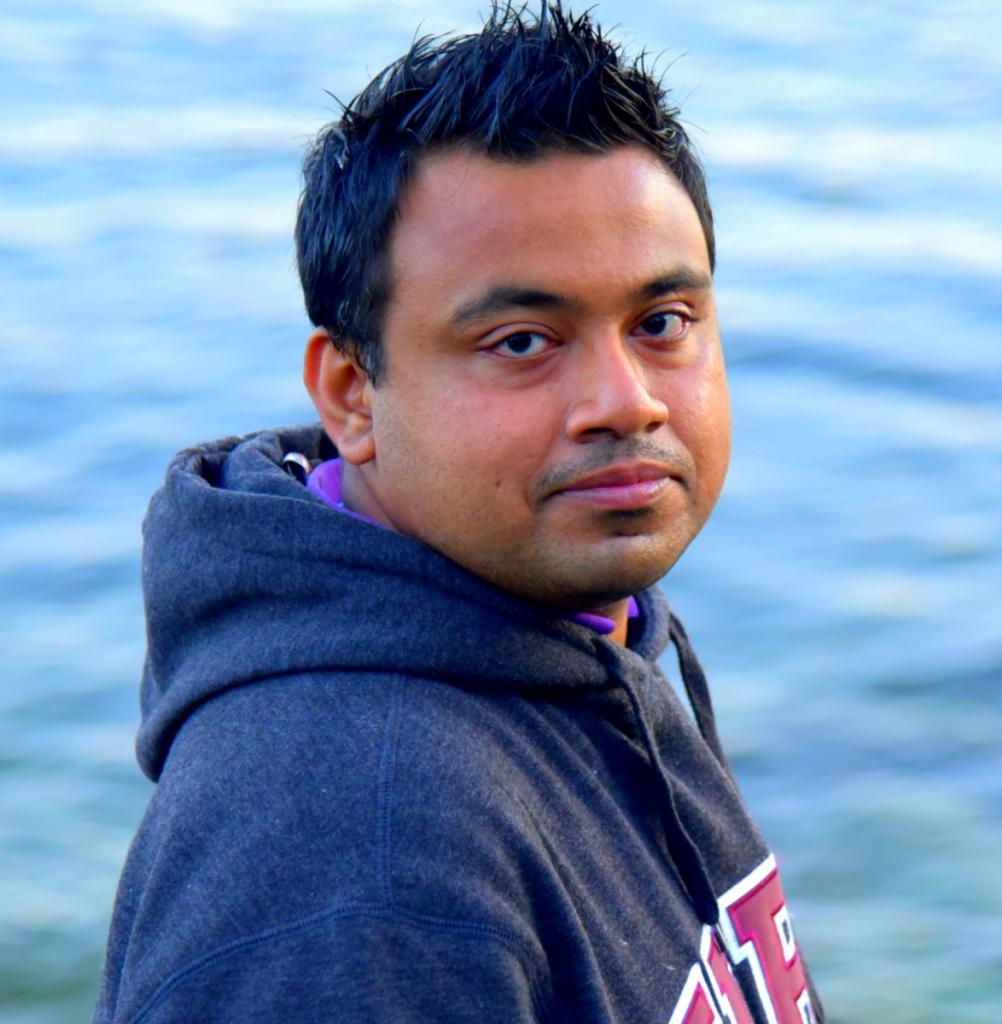 Emran Mohammed Abu Anas — A scaphoid fracture is the most probable outcome of wrist injury and the main reason of such injury is sudden fall on an outstretched arm. For an acute fracture, surgical procedure is recommended by keeping the invasion as minimal as possible. Typically the procedure is performed under fluoroscopic guidance, where the surgeons need to map 2D information to a 3D space. Such mapping is quite challenging even for the expert surgeons, therefore, the medical community is looking for an alternate imaging modality for the solution. Fortunately, ultrasound provides a real-time 3D imaging, however, the information in ultrasound is significantly noisy and it provides only a limited view of the bony anatomy. Dr. Anas solved the challenges by registering a statistical atlas of the wrist to the intraoperative ultrasound. He plans to collaborate with the Human Mobility Research Centre in order to test his developed technique on data from subjects as well as cadavers for testing of the methodology. Ultimately, he plans to show the impact of providing 3D models and guidance for improving the quality of care for patients through a feasibility study at Queen’s. Success of this project will not only train PhD, MSc, and Undergraduate students at Queens but promote research excellence by taking transformative steps towards surgical practices.
Emran Mohammed Abu Anas — A scaphoid fracture is the most probable outcome of wrist injury and the main reason of such injury is sudden fall on an outstretched arm. For an acute fracture, surgical procedure is recommended by keeping the invasion as minimal as possible. Typically the procedure is performed under fluoroscopic guidance, where the surgeons need to map 2D information to a 3D space. Such mapping is quite challenging even for the expert surgeons, therefore, the medical community is looking for an alternate imaging modality for the solution. Fortunately, ultrasound provides a real-time 3D imaging, however, the information in ultrasound is significantly noisy and it provides only a limited view of the bony anatomy. Dr. Anas solved the challenges by registering a statistical atlas of the wrist to the intraoperative ultrasound. He plans to collaborate with the Human Mobility Research Centre in order to test his developed technique on data from subjects as well as cadavers for testing of the methodology. Ultimately, he plans to show the impact of providing 3D models and guidance for improving the quality of care for patients through a feasibility study at Queen’s. Success of this project will not only train PhD, MSc, and Undergraduate students at Queens but promote research excellence by taking transformative steps towards surgical practices.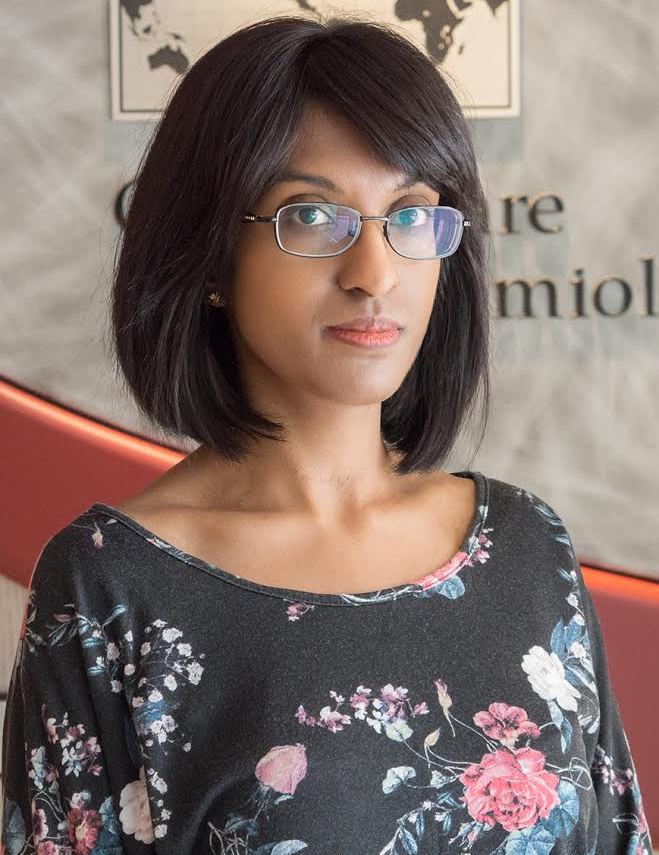 Serisha Moodley — Dr. Serisha Moodley is pursuing a postdoctoral fellowship focusing on the characterization of RET-targeted therapeutics for the treatment of lung cancers with Dr. Lois Mulligan, a professor of Pathology & Molecular Medicine at the Queen’s Cancer Research Institute. Dr. Moodley will complement her strong background in cell/molecular biology and research experience in molecular mechanisms of lung pathophysiology by working alongside the research community at Queen’s University’s Division of Cancer Biology and Genetics. Through collaborations with Cancer Research UK, Centre for Commercialization of Antibodies and Biologics and Toronto Recombinant Antibody Centre, Dr. Moodley will be instrumental in establishing joint ventures with industry partners for the development of novel cancer therapeutics and continued interest in biomedical research at Queen’s University.
Serisha Moodley — Dr. Serisha Moodley is pursuing a postdoctoral fellowship focusing on the characterization of RET-targeted therapeutics for the treatment of lung cancers with Dr. Lois Mulligan, a professor of Pathology & Molecular Medicine at the Queen’s Cancer Research Institute. Dr. Moodley will complement her strong background in cell/molecular biology and research experience in molecular mechanisms of lung pathophysiology by working alongside the research community at Queen’s University’s Division of Cancer Biology and Genetics. Through collaborations with Cancer Research UK, Centre for Commercialization of Antibodies and Biologics and Toronto Recombinant Antibody Centre, Dr. Moodley will be instrumental in establishing joint ventures with industry partners for the development of novel cancer therapeutics and continued interest in biomedical research at Queen’s University.